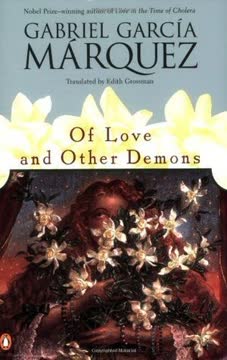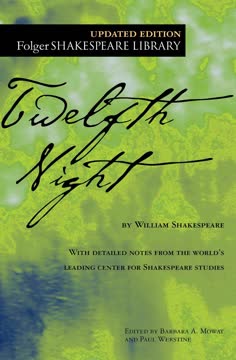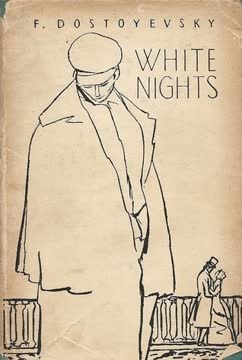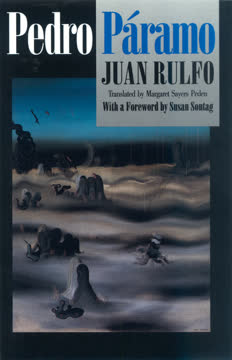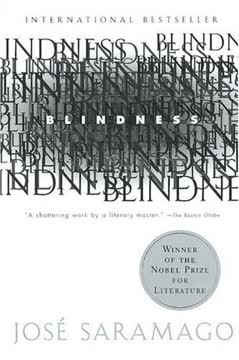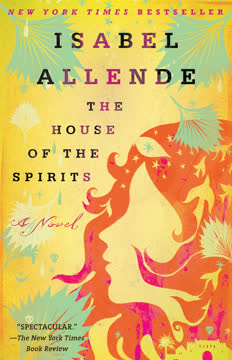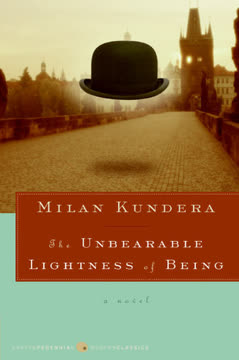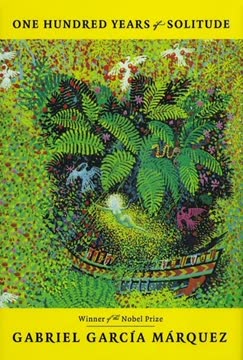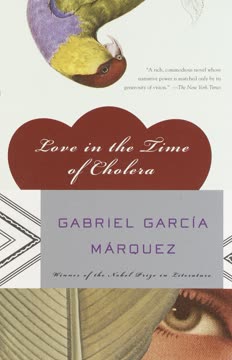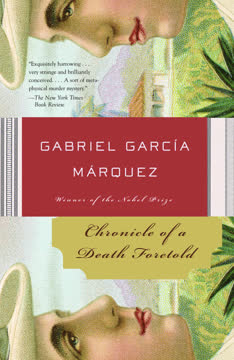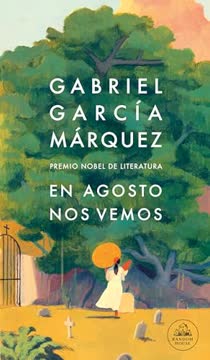Plot Summary
Copper Hair Unearthed
In 1949, a journalist witnesses the opening of the crypts at the old Convent of Santa Clara, where a girl's skull is found with a twenty-two-meter-long copper braid. The legend of Sierva María, a twelve-year-old marquise with miraculous hair, is revived. Her story, shrouded in myth and miracle, becomes the seed for the narrative, blending the supernatural with the historical, and setting the stage for a tale of love, faith, and tragedy in colonial Colombia.
The Dog's Fatal Bite
Sierva María, daughter of the Marquis de Casalduero, is bitten by a rabid dog in a bustling market. The wound is minor and ignored, but the event triggers a chain of fear and superstition. The city, already haunted by tales of rabies and African plagues, becomes a crucible for anxieties about disease, race, and the unknown. Sierva María's fate is sealed not by the bite itself, but by the world's reaction to it.
A Family of Strangers
Sierva María's parents, the Marquis and Bernarda, are emotionally distant and consumed by their own vices and regrets. The Marquis is haunted by loss and fear, while Bernarda is lost to addiction and past passions. Sierva María, raised among slaves and servants, is more a stranger than a daughter in her own home, her identity shaped by the margins of society rather than its center.
The Slave Girl's World
Sierva María grows up immersed in African languages, rituals, and beliefs, cared for by Dominga de Adviento and the slave women. Her world is one of syncretic faith, music, and freedom within the confines of servitude. She is marked by her copper hair, her silence, and her ability to move between cultures, yet she remains an outsider everywhere—too white for the slaves, too African for her family.
Rabies or Demons?
As rumors of rabies spread, Sierva María's minor wound becomes a source of terror. The Marquis, desperate and guilt-ridden, consults doctors and healers, but the city's fear turns to whispers of demonic possession. The Bishop, eager to assert spiritual authority, insists that Sierva María's symptoms are the work of the devil, not disease, and orders her confinement in the Convent of Santa Clara for exorcism.
The Marquis's Awakening
The Marquis, realizing his neglect, tries to reclaim his daughter and fill her life with happiness, as prescribed by the rational doctor Abrenuncio. He attempts to bridge the chasm between them, but his efforts are too late and too clumsy. The family's dysfunction, the city's hysteria, and the church's power converge to isolate Sierva María further, setting her on a path toward tragedy.
The Convent's Prison
Sierva María is delivered to the convent, where she is treated as both a curiosity and a threat. The Abbess, Josefa Miranda, is rigid and resentful, seeing the girl as a pawn in her feud with the Bishop. Sierva María's African customs and languages are mistaken for signs of possession. She is locked in a cell, subjected to suspicion, and becomes the center of a storm of fear, fascination, and cruelty.
The Abbess's War
The convent is a battleground of power, tradition, and superstition. The Abbess's animosity toward the Bishop and her disdain for American-born aristocrats fuel her harsh treatment of Sierva María. The nuns' curiosity and fear turn the girl's cell into a spectacle, while the acta—official records—document every supposed miracle or outrage, further entrenching the belief in her possession.
Delaura's Dream
Father Cayetano Delaura, the Bishop's protégé, dreams of a girl with endless hair eating grapes at a window—a vision that draws him to Sierva María. Tasked with her exorcism, Delaura is both fascinated and unsettled. His scholarly mind and spiritual doubts set him apart from the zealotry around him, and his first encounter with Sierva María marks the beginning of a profound, forbidden connection.
Exorcist Meets the Girl
Delaura's initial visits to Sierva María are marked by skepticism and compassion. He treats her wounds, listens to her silences, and begins to see her not as a vessel of evil but as a suffering, misunderstood child. Their interactions, fraught with tension and tenderness, awaken feelings in both that challenge the boundaries of faith, duty, and desire.
Forbidden Affections Grow
As Delaura and Sierva María spend more time together, their relationship deepens into a secret, passionate love. They share poetry, stories, and dreams, finding solace in each other amid the cruelty of the convent. Their love, both spiritual and physical, becomes an act of rebellion against the forces that seek to destroy them.
The Viceroy's Visit
The arrival of the Viceroy and Vicereine brings a brief moment of hope and spectacle to the convent. Sierva María is paraded as a curiosity, her beauty and strangeness captivating the visitors. The Vicereine is moved to pity and tries to intervene, but the machinery of church and state grinds on, indifferent to individual suffering.
Love in the Shadows
Delaura, punished and stripped of his privileges, risks everything to visit Sierva María in secret. Their clandestine meetings are filled with longing, poetry, and the desperate hope of escape. They dream of a life together beyond the walls, but the world outside is as hostile as the one within.
The Lovers' Secret Nights
The lovers' relationship intensifies, balancing on the edge of innocence and transgression. They share their fears, their bodies, and their faith, creating a private world of tenderness amid the violence of exorcism and confinement. Their love is both a sanctuary and a curse, drawing the attention and wrath of those in power.
The Exorcism's Cruelty
The church's response to Sierva María's supposed possession grows more brutal. Her hair is cut, her body bound, and she is subjected to public exorcisms that border on torture. The Bishop, once compassionate, becomes an instrument of institutional cruelty. Delaura is torn between his love and his vows, powerless to save her from the machinery of faith.
Loss, Madness, and Escape
As the exorcisms intensify, Sierva María's spirit breaks. Allies vanish—Father Aquino dies mysteriously, Martina Laborde escapes, and the Marquis succumbs to loneliness and regret. Delaura's attempts to save Sierva María are thwarted by the convent's walls and the world's indifference. The lovers are separated by force, rumor, and fate.
The Lovers' Final Separation
Delaura is condemned to serve lepers, exiled from the world and from Sierva María. The convent, now a prison in earnest, isolates the girl completely. Their love, once a source of hope, becomes a memory that haunts them both. Sierva María, abandoned and broken, loses the will to live.
Death by Love
Sierva María dies alone in her cell, her body ravaged by neglect and exorcism, her spirit sustained only by the memory of love. In death, her hair begins to grow again, a final miracle that echoes the legend. The story ends as it began—with a girl, a miracle, and a world unable to understand the true nature of love and other demons.
Characters
Sierva María de Todos los Ángeles
Sierva María is the twelve-year-old daughter of the Marquis and Bernarda, distinguished by her extraordinary copper hair and her upbringing among African slaves. She is a liminal figure—white by birth, African by culture, and alienated from both worlds. Her silence, resilience, and capacity for love set her apart, but also make her a target for fear and superstition. Psychologically, she is a child forced into adulthood by neglect and violence, seeking connection in a world that denies her agency. Her relationship with Delaura is both a rebellion and a refuge, and her tragic end is a testament to the destructive power of ignorance and zealotry.
Father Cayetano Delaura
Delaura is a learned, sensitive priest chosen to exorcise Sierva María. Haunted by dreams and doubts, he is both a man of faith and a skeptic, drawn to forbidden knowledge and forbidden love. His psychoanalytic complexity lies in his struggle between duty and desire, reason and passion. His love for Sierva María transforms him, leading him to defy the church and risk everything for her. Ultimately, he is punished for his humanity, condemned to a life of penance and longing.
The Marquis de Casalduero (Don Ygnacio)
The Marquis is a tragic figure, shaped by loss, guilt, and indecision. His inability to love or protect his daughter until it is too late is both a personal failing and a reflection of a decaying aristocracy. He is haunted by the ghosts of his past and the collapse of his family, seeking redemption through belated acts of care that only deepen his sorrow.
Bernarda Cabrera
Bernarda is Sierva María's mother, a woman undone by addiction, failed love, and bitterness. Her relationship with her daughter is marked by neglect and resentment, and her own life is a spiral of self-destruction. She is both victim and perpetrator, her psychological wounds manifesting in cruelty and indifference.
Josefa Miranda (The Abbess)
The Abbess is the head of the Convent of Santa Clara, a woman defined by rigidity, prejudice, and a long-standing feud with the Bishop. She embodies the dangers of institutional power unchecked by compassion, and her treatment of Sierva María is driven by personal animosity as much as religious conviction.
Abrenuncio de Sa Pereira Cao
Abrenuncio is the city's controversial physician, a Jew and a skeptic, who represents science and reason amid the hysteria of the time. He is compassionate and wise, but powerless against the tide of superstition and institutional violence. His friendship with Delaura and the Marquis offers a counterpoint to the prevailing madness.
Father Tomás de Aquino de Narváez
Father Aquino is a priest with deep knowledge of African languages and customs, chosen to replace the Bishop as exorcist. He is empathetic and open-minded, able to communicate with Sierva María in her own terms. His mysterious death underscores the dangers faced by those who challenge orthodoxy.
Martina Laborde
Martina is a former nun imprisoned for murder, who befriends Sierva María in the convent. She is both mentor and accomplice, embodying the longing for escape and the solidarity of the marginalized. Her successful escape is a rare act of agency in a world of confinement.
Dulce Olivia
Dulce Olivia is the Marquis's first love, a madwoman whose presence haunts the family. She represents the persistence of desire and the tragedy of unfulfilled potential, her madness a mirror for the world's own irrationality.
Bishop Don Toribio de Cáceres y Virtudes
The Bishop is a learned, aging prelate whose authority is undermined by illness and doubt. He is both compassionate and complicit, his decisions shaped by institutional pressures and personal weakness. His role in Sierva María's fate is both paternal and punitive, reflecting the ambiguities of religious power.
Plot Devices
Magical Realism and Legend
The novel's foundation is the legend of the girl with miraculous hair, and García Márquez weaves magical realism throughout—hair that grows after death, dreams that foretell fate, and miracles mistaken for curses. This device allows the narrative to explore the porous boundaries between faith, superstition, and the inexplicable, making the ordinary world shimmer with possibility and dread.
Dualities and Contrasts
The story is structured around dualities: faith and reason, love and duty, freedom and confinement, African and European, innocence and corruption. These contrasts are embodied in the characters and their relationships, and the tension between them propels the plot toward its tragic conclusion.
Foreshadowing and Dreams
Delaura's recurring dream of Sierva María at the window eating grapes is a central motif, foreshadowing her fate and the inevitability of loss. The use of dreams and omens heightens the sense of fatalism and the power of the unconscious in shaping destiny.
Institutional Power and Ritual
The narrative is punctuated by rituals—exorcisms, confessions, public ceremonies—that serve both to control and to destroy. The acta, or official records, function as a plot device to document and legitimize cruelty, while the machinery of the convent and the church grinds down individual will.
Narrative Structure
The novel is framed by the discovery of Sierva María's remains, linking past and present, legend and history. The narrative moves fluidly between perspectives, times, and voices, creating a tapestry of memory, myth, and testimony that resists closure and certainty.
Analysis
Of Love and Other Demons is a haunting meditation on the collision of love, faith, and power in a world ruled by superstition and fear. García Márquez uses the tools of magical realism to expose the real horrors of colonial society: racism, misogyny, and the violence of institutions that claim to save souls while destroying bodies. The novel's central love story is both a rebellion against and a victim of these forces, its beauty inseparable from its tragedy. Sierva María and Delaura's doomed passion is a testament to the human longing for connection in a world that punishes difference and desire. The book warns against the dangers of dogma, the blindness of authority, and the cost of failing to see the humanity in those we fear or do not understand. Ultimately, it is a story about the other demons—ignorance, prejudice, and the inability to love—that haunt us still.
Last updated:
FAQ
Synopsis & Basic Details
What is Of Love and Other Demons about?
- A Doomed Colonial Romance: The novel centers on Sierva María de Todos los Ángeles, a twelve-year-old marquise bitten by a rabid dog in colonial Cartagena. Her wealthy, neglectful parents, fearing rabies and public scandal, confine her to a convent for exorcism, where she falls into a forbidden love with her exorcist, Father Cayetano Delaura.
- Clash of Faiths & Cultures: It explores the brutal collision between European Catholicism and African Yoruban beliefs, as Sierva María, raised by slaves, embodies a syncretic spirituality that is tragically misinterpreted as demonic possession by the rigid Church.
- Tragedy of Institutional Power: The narrative critiques the destructive power of dogma, superstition, and institutional authority, which ultimately condemn an innocent girl and her lover, highlighting the human cost of fear and ignorance.
Why should I read Of Love and Other Demons?
- Masterful Magical Realism: Experience Gabriel García Márquez's signature blend of the fantastical and the mundane, where a girl's impossibly long hair and prophetic dreams intertwine with historical realities, creating a rich, immersive world.
- Profound Thematic Depth: Delve into complex themes of love, freedom, faith, madness, and the corrupting influence of power, all explored through deeply flawed yet compelling characters.
- Haunting Emotional Resonance: The novel offers a poignant and tragic love story, set against a backdrop of societal decay and spiritual oppression, leaving a lasting impression on the reader about the enduring human spirit and the cost of intolerance.
What is the background of Of Love and Other Demons?
- Colonial Cartagena Setting: The story is set in 18th-century Cartagena de Indias, a vibrant but decaying port city in colonial Colombia, reflecting the historical context of the Spanish Inquisition's influence, the transatlantic slave trade, and the mixing of European, African, and indigenous cultures.
- Author's Personal Inspiration: The novel's genesis lies in a real-life journalistic assignment Gabriel García Márquez undertook in 1949, where he witnessed the unearthing of a crypt containing a girl's skull with extraordinary hair, sparking the legend that forms the book's core.
- Critique of Religious Dogma: It implicitly critiques the rigid, often cruel, practices of the Catholic Church during the colonial era, particularly the Inquisition's methods and its conflation of disease or cultural difference with demonic possession, reflecting a broader historical commentary on religious intolerance.
What are the most memorable quotes in Of Love and Other Demons?
- "No medicine cures what happiness cannot.": Spoken by Abrenuncio, this quote encapsulates the physician's humanist philosophy, contrasting sharply with the Church's dogmatic approach and highlighting the novel's central theme of love and joy as ultimate healers.
- "Disbelief is more resistant than faith because it is sustained by the senses.": The Marquis's profound realization after losing his faith, this line delves into the psychological struggle between empirical reality and spiritual conviction, a core conflict for many characters, especially Delaura.
- "For you was I born, for you do I have life, for you will I die, for you am I now dying.": Delaura's ardent recitation of Garcilaso de la Vega's sonnet to Sierva María, this quote becomes a powerful motif of their forbidden love, symbolizing its all-consuming nature and tragic inevitability.
What writing style, narrative choices, and literary techniques does Gabriel García Márquez use?
- Lyrical and Sensory Prose: García Márquez employs rich, evocative language that appeals to all senses, immersing the reader in the humid, decaying atmosphere of Cartagena, from "the oppressive damp of neglect and gloom" to the "acrid odor of burned horn," enhancing the novel's vivid imagery.
- Non-Linear Narrative & Framing Device: The story begins with a contemporary journalistic discovery (1949) that frames the historical narrative (18th century), blurring the lines between past and present, legend and reality, and inviting readers to question the nature of truth and memory.
- Symbolism and Motif Repetition: The novel is replete with recurring symbols like Sierva María's copper hair (representing wildness, life, and the supernatural), the dog (fate, disease, the animalistic), and the orange trees (a fleeting Eden, a place of both love and decay), which deepen the thematic resonance and invite layered interpretation.
Hidden Details & Subtle Connections
What are some minor details that add significant meaning?
- Sierva María's Cowbell: Initially hung by Bernarda to track her stealthy daughter, the cowbell symbolizes the mother's fear and desire for control over Sierva María's "otherness." Its eventual silence, as Sierva María learns to move without it ringing, highlights her innate connection to the unseen world and her resistance to confinement.
- The Marquis's Empty Crypt: The discovery of the Marquis's unused, empty crypt in the opening scene subtly foreshadows his unlived, emotionally barren life, a man who prepared for death but never truly lived, and whose legacy is one of neglect and unfulfilled potential.
- Abrenuncio's Hundred-Year-Old Horse: The physician's claim that his horse lived to be a hundred, dismissed by the Marquis, is a subtle nod to Abrenuncio's own unconventional wisdom and his ability to defy perceived natural limits, reinforcing his role as a figure of alternative knowledge and a counterpoint to rigid beliefs.
What are some subtle foreshadowing and callbacks?
- The Bishop's Past Loss of Faith: The Bishop's confession that he lost his faith at age twenty in Morocco, only to regain it through prayer, subtly foreshadows Delaura's own spiritual crisis and his struggle between doubt and devotion when confronted with Sierva María's case.
- Martina Laborde's Escape: Martina's successful, meticulously planned escape from the convent, using a secret tunnel, serves as a callback to the historical siege of the convent and the nuns' own past defiance, hinting at the possibility of freedom for Sierva María, though ultimately unfulfilled.
- The "Pool of Sighs": This specific location at the Mahates sugar plantation, where Bernarda bathed and later where the Marquis found her in her final degradation, acts as a callback to moments of both illicit pleasure and profound despair, symbolizing the cyclical nature of human vice and longing.
What are some unexpected character connections?
- Dulce Olivia and the Marquis's Unlived Life: Dulce Olivia, the Marquis's first love and a "madwoman," represents the path not taken, a life of genuine connection and unconventional love that he abandoned. Her sporadic appearances and the Marquis's final, desperate attempt to seek refuge with her underscore his lifelong regret and the enduring power of lost possibilities.
- Martina Laborde as Sierva María's Confidante: The murderer Martina, confined in the same prison pavilion, becomes Sierva María's unexpected ally and mentor, teaching her embroidery and offering a form of solidarity. This connection highlights how marginalized individuals find solace and understanding in each other, defying the moral judgments of the outside world.
- Abrenuncio and Delaura's Intellectual Kinship: Despite their differing professions and religious affiliations, the rational physician Abrenuncio and the scholarly priest Delaura share a deep intellectual respect and a common ground in their pursuit of truth, forming an unlikely alliance against the prevailing superstition and institutional cruelty.
Psychological, Emotional, & Relational Analysis
What are some unspoken motivations of the characters?
- Marquis's Redemption Arc: The Marquis's sudden, intense "love" for Sierva María is less about genuine paternal affection and more about a desperate attempt at personal redemption. He seeks to atone for a lifetime of neglect and emotional paralysis, projecting his unfulfilled desires and fears onto his daughter, as seen when he thinks, "he was helping her to die."
- Bernarda's Self-Destruction: Bernarda's descent into addiction and debauchery is driven by a profound sense of disillusionment and self-loathing, stemming from her transactional marriage and the loss of her true passion, Judas Iscariote. Her hatred for Sierva María is a projection of her own internal chaos and resentment for a life she feels was stolen.
- Delaura's Intellectual Curiosity and Spiritual Doubt: Beyond his priestly duties, Delaura is motivated by a deep intellectual curiosity and a subtle, unacknowledged spiritual doubt. His fascination with Sierva María's "possession" is initially a scholarly challenge, a desire to understand the unknown, which gradually transforms into a forbidden emotional and spiritual awakening.
What psychological complexities do the characters exhibit?
- The Marquis's Effeminate Paralysis: Don Ygnacio is characterized by a profound effeminacy and a crippling fear of life, stemming from his tyrannical father's suppression of his true nature and his unfulfilled love for Dulce Olivia. His "languid behavior" and "mystic vocation" are psychological retreats from a world he cannot confront, making him a passive observer of his own decay.
- Sierva María's Adaptive Silence and Lies: Sierva María's long periods of silence and her "habit of lying for pleasure" are complex coping mechanisms developed in response to profound neglect and misunderstanding. These behaviors are not signs of malice but rather a form of self-preservation and agency, allowing her to control her inner world when her external reality is chaotic and hostile.
- Delaura's Asceticism and Forbidden Desire: Father Delaura embodies a complex tension between his rigorous asceticism and a burgeoning, forbidden desire. His intellectual prowess and devotion to the Holy Spirit are challenged by his visceral attraction to Sierva María, leading to internal flagellation and a "moral cataclysm" that reveals the fragility of his self-imposed purity.
What are the major emotional turning points?
- The Marquis's "Love" for Sierva María: A pivotal emotional shift occurs when the Marquis, after witnessing the rabid man's agony, realizes his fear of rabies for Sierva María is intertwined with a newfound, albeit distorted, love. He declares, "He felt the new joy of knowing he loved her as he had never loved in this world," marking his belated attempt at paternal connection.
- Delaura's Confession of Love: The moment Delaura confesses "Because I love you very much" to Sierva María, after she asks why he heals her despite being her exorcist, marks a profound emotional turning point, transforming their relationship from one of duty to one of forbidden passion and mutual vulnerability.
- Sierva María's Surrender to Death: Her final dream, where she pulls grapes "two by two" from the cluster, signifies her loss of will to live and her acceptance of death. This emotional turning point is a direct consequence of Delaura's forced separation, highlighting the devastating impact of their severed connection.
How do relationship dynamics evolve?
- Marquis and Bernarda: From Transaction to Despair: Their marriage, initially a transactional arrangement based on Bernarda's ambition and the Marquis's passivity, devolves into mutual contempt and parallel paths of self-destruction. Their final encounter at Mahates, where Bernarda reveals her calculated deception, marks the complete dissolution of any pretense of a relationship, leaving only shared misery.
- Delaura and the Bishop: Mentor to Ideological Opponents: The relationship between Delaura and the Bishop evolves from a deep mentor-protégé bond, rooted in shared intellectual pursuits and mutual respect, to an ideological clash over Sierva María's fate. The Bishop's ultimate decision to exile Delaura signifies the triumph of institutional dogma over individual compassion and reason.
- Sierva María and Martina Laborde: Prisoner Solidarity to Shared Dreams: Their bond, forged in the confines of the convent's prison, transforms from a simple alliance into a deep friendship. Martina becomes a surrogate mother figure, teaching Sierva María and sharing dreams of freedom, demonstrating the power of human connection even in the most oppressive environments.
Interpretation & Debate
Which parts of the story remain ambiguous or open-ended?
- The Nature of Sierva María's "Possession": The novel deliberately leaves open whether Sierva María is truly possessed by demons, suffering from rabies, or simply a victim of cultural misunderstanding and institutional cruelty. The "acta" of the convent, while presented as evidence, are shown to be biased and unreliable, leaving the reader to interpret the truth.
- The Physicality of Delaura and Sierva María's Love: While their emotional and spiritual bond is explicit, the exact nature of their physical intimacy remains ambiguous. Descriptions like Delaura's "moral cataclysm" and their "spent, but virgin" state suggest a love that pushes boundaries without necessarily crossing them, leaving the reader to ponder the limits of their forbidden passion.
- The Fate of Father Aquino: Father Aquino's mysterious death, found floating in a cistern, is never fully explained. While the Abbess attributes it to demonic animosity, the narrative hints at other possibilities, such as his own internal struggles or the dangers of challenging established norms, leaving his demise open to multiple interpretations.
What are some debatable, controversial scenes or moments in Of Love and Other Demons?
- The Marquis's "Love" for Sierva María: A central debate revolves around the authenticity of the Marquis's sudden affection for Sierva María. Is it genuine paternal love, a desperate attempt to fill his own void, or a self-serving act of redemption driven by guilt and fear, as suggested by his initial indifference and his desire to "rectify the past"?
- The Church's Role in Sierva María's Suffering: While the Church is portrayed as a cruel, dogmatic institution, some might debate whether its actions are purely malicious or born of genuine, albeit misguided, belief in saving a soul from damnation. The Bishop's own internal struggles and his eventual illness add layers to this complex portrayal.
- The Ending's Meaning: Triumph or Tragedy?: Sierva María's death, described as "dead of love" with her hair growing back, can be debated as either a tragic defeat at the hands of oppressive forces or a spiritual triumph, where her love and true nature transcend the physical suffering and institutional attempts to control her.
Of Love and Other Demons Ending Explained: How It Ends & What It Means
- Sierva María's "Death of Love": Sierva María dies in her cell, emaciated and broken by the relentless exorcisms and the separation from Delaura. The novel states she died "of love," implying that her spirit, sustained by her connection with Delaura, could not endure without him, making her a martyr to forbidden affection and institutional cruelty.
- The Miraculous Hair's Final Growth: In a final act of magical realism, Sierva María's shaved hair begins to grow back immediately after her death, gushing "like bubbles." This symbolizes the enduring power of her true nature, her untamed spirit, and the triumph of life and love over the attempts to suppress or "cure" her, echoing the legend that began the story.
- The Triumph of Spirit Over Dogma: The ending of Of Love and Other Demons signifies the tragic failure of rigid dogma and institutional power to extinguish the human spirit and the power of love. Despite the Church's efforts to "save" her soul through brutal means, Sierva María's essence, symbolized by her hair and her love for Delaura, ultimately defies their control, suggesting that true salvation lies outside their narrow definitions.
Review Summary
Of Love and Other Demons receives mixed reviews, with many praising Márquez's enchanting prose and magical realism. The story of 12-year-old Sierva Maria, believed to be demon-possessed, explores themes of love, religion, and cultural clashes. Some readers find it captivating and bittersweet, while others struggle with its pacing and characters. The novel's examination of faith, superstition, and forbidden love resonates with many, though some find the relationship between the young girl and the priest unsettling.
Similar Books
Download PDF
Download EPUB
.epub digital book format is ideal for reading ebooks on phones, tablets, and e-readers.
